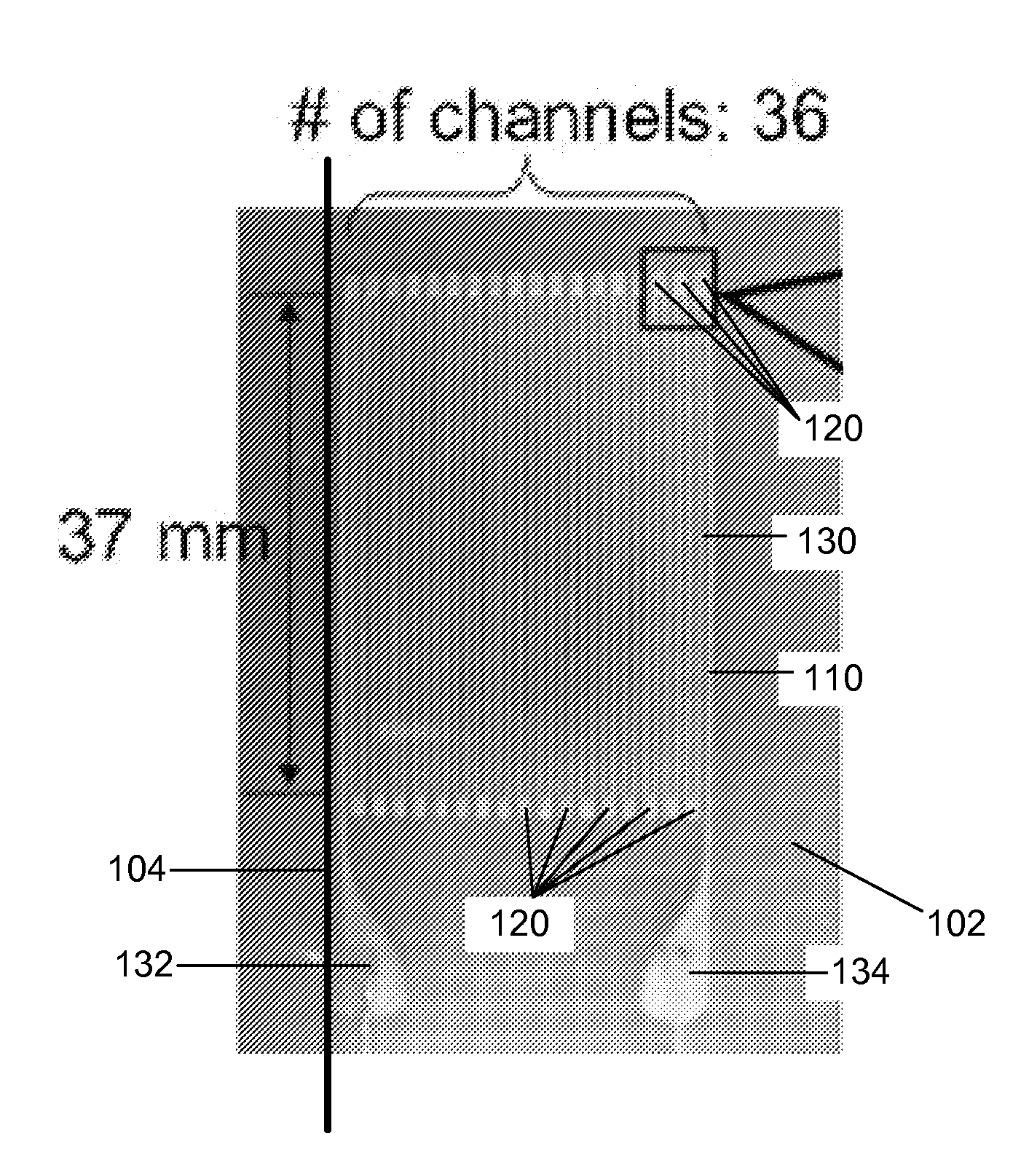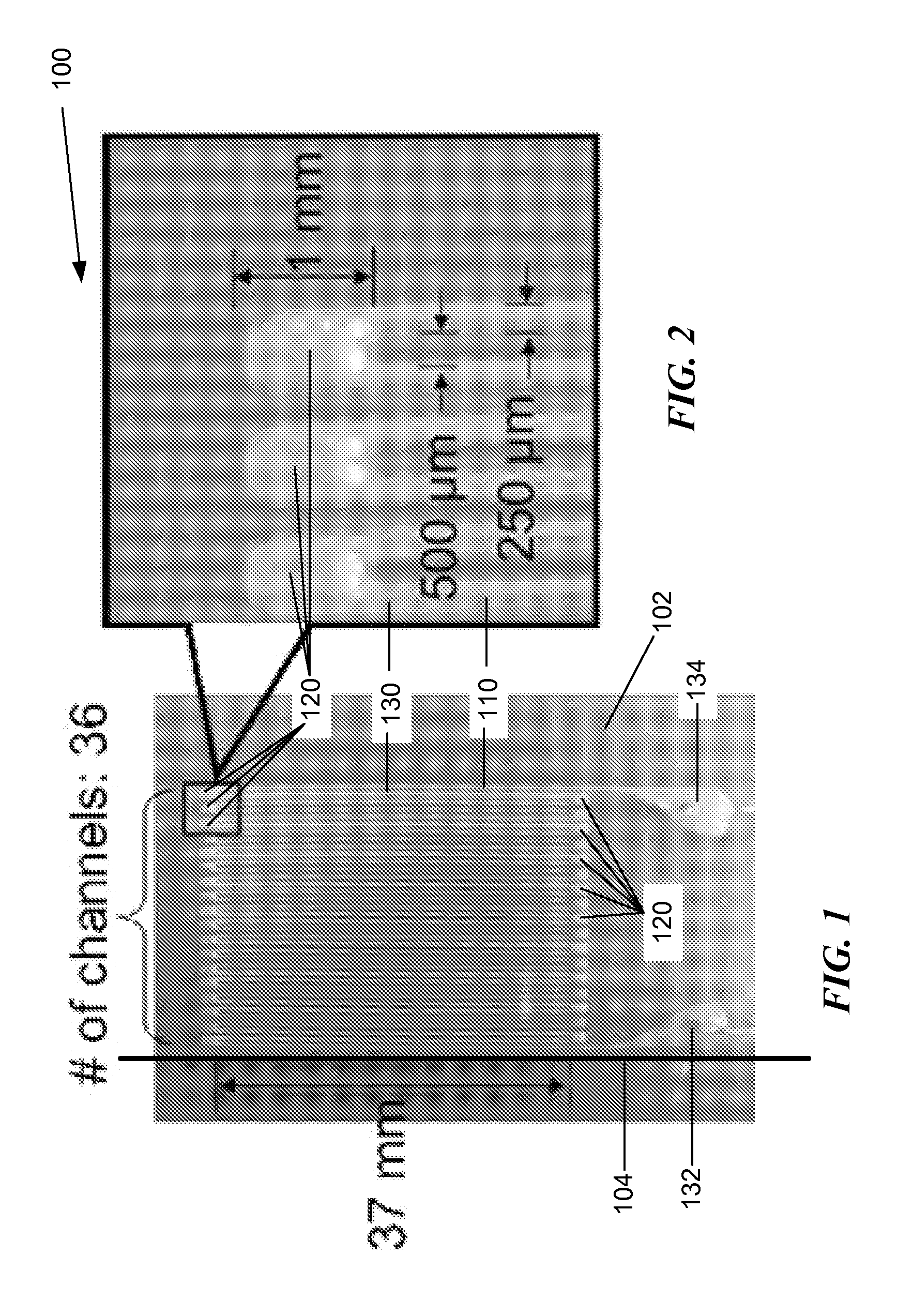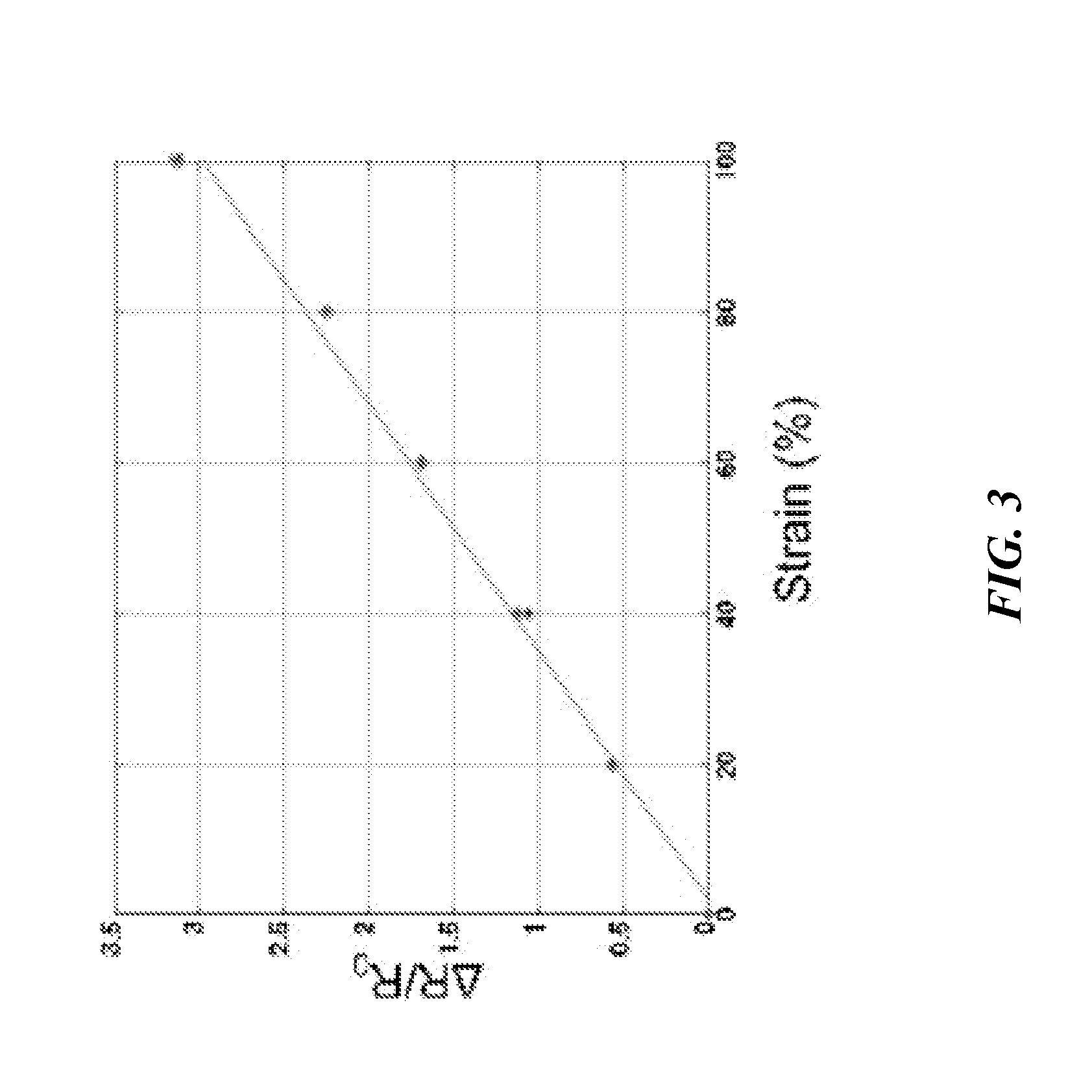Artificial skin and elastic strain sensor
a technology of elastic strain and elastic sensors, applied in the direction of instruments, force/torque/work measurement apparatuses, diagnostic recording/measuring, etc., can solve the problem of complex mechanical properties of pressure sensing
- Summary
- Abstract
- Description
- Claims
- Application Information
AI Technical Summary
Benefits of technology
Problems solved by technology
Method used
Image
Examples
Embodiment Construction
[0040]The present invention is directed to elastic sensors and methods for fabricating elastic sensors that respond to strain in a single direction. This can be accomplished by forming a set of elongated microchannels in an elastic material such as silicone rubber sheet (EcoFlex 0030, SmoothOn, Easton, Pa.; PDMS, Dow Corning). Each microchannel can be formed to extend substantially parallel to a strain axis and the microchannels can be interconnected at their ends by loop portions to form a continuous channel over which to measure electrical resistance. The continuous channel can be filled with a conductive material, such as a conductive liquid, for example, non-toxic eutectic gallium-indium (eGaIn, BASF). In accordance with some embodiments of the invention, the loop portions can that have sufficient cross-sectional area in a direction transverse to the strain axis that strain in a direction transverse to the strain axis does not result in significant change in electrical resistanc...
PUM
| Property | Measurement | Unit |
|---|---|---|
| width | aaaaa | aaaaa |
| width | aaaaa | aaaaa |
| thick | aaaaa | aaaaa |
Abstract
Description
Claims
Application Information
 Login to View More
Login to View More - R&D
- Intellectual Property
- Life Sciences
- Materials
- Tech Scout
- Unparalleled Data Quality
- Higher Quality Content
- 60% Fewer Hallucinations
Browse by: Latest US Patents, China's latest patents, Technical Efficacy Thesaurus, Application Domain, Technology Topic, Popular Technical Reports.
© 2025 PatSnap. All rights reserved.Legal|Privacy policy|Modern Slavery Act Transparency Statement|Sitemap|About US| Contact US: help@patsnap.com



